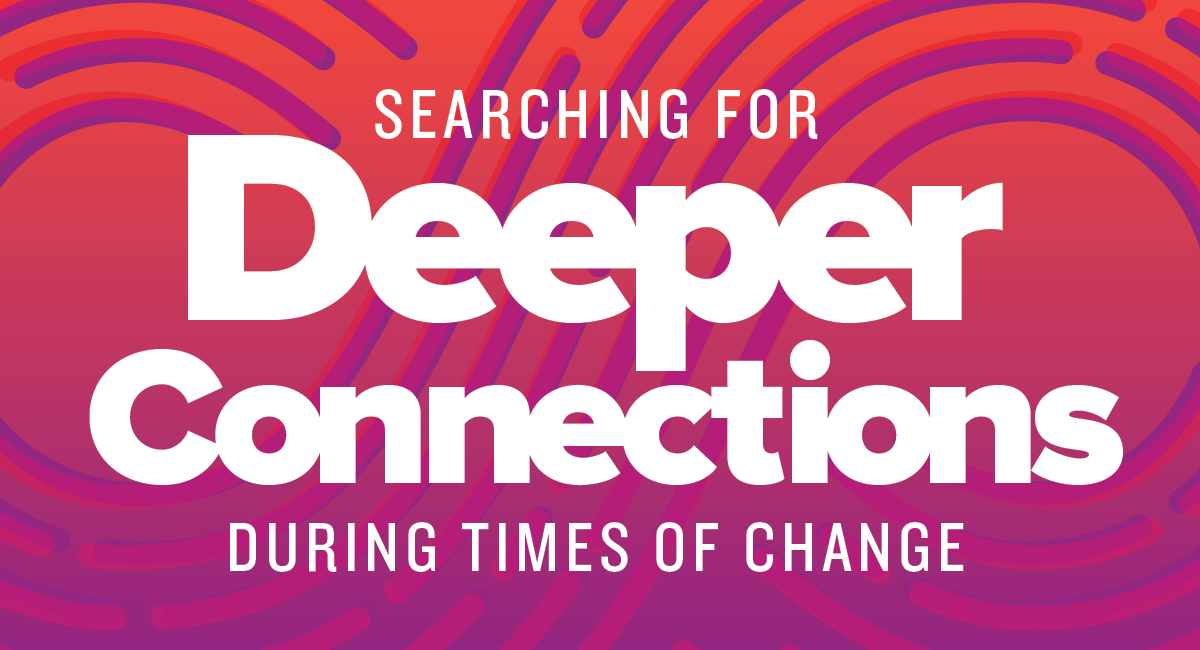In our next blog series, Chris Hoke, chief creative officer, investigates the changes to our information landscape during the pandemic, surveys the opportunities that lie at the intersection of content and channel, and looks at how to judge success in these endeavors. This is the first of our three-part blog series.
Part One: Searching for Deeper Connections During Times of Change
Part Two: Supporting Your Brand Outposts Through Content and Channel
Part Three: Evaluating Your Success Story: Understanding Audience Feedback
In the current, highly disrupted media landscape, brands face both the challenge and the opportunity for a once-in-a-lifetime defining moment. Historically, shifts like the one we face today happen quickly and radically—new technologies and acute events can abruptly change communications in both practice and content. The unforeseen advent of most people working and interacting virtually has altered the way people consume information. Knowing that brands will have to adjust the way they communicate both during and after the COVID-19 crisis, it is worth auditing your own plans.
Wide-ranging studies show that people are hungry for more information and entertainment. It’s not just news—demand for “comfort” content (rom-coms, comedy, snackable videos) is also exploding. In Nielsen studies of past major crises (Hurricane Harvey in 2017 and a 2016 blizzard in the Northeastern U.S., specifically) viewing of media jumped almost 60%. A recent study looking at the relatively short duration of our current crisis shows an uptick of consumption across all forms of media—from 12% on average for podcasts, to 44% for social media, and up to 67% for news sources.
What will your brand do with this opportunity? How will you engage your existing audience and build connections with new ones?
CASTLES MADE OF (SHIFTING) SAND
As communications professionals we must train ourselves to be perpetually reactive within this rapidly evolving media landscape while holistically driving towards organizational goals. It becomes more critical than ever to understand your (or your clients’) brand voice on all channels, while simultaneously keeping in mind that consumers can be as much of a fan of a particular channel as they are of a brand.
One channel may be your audiences’ primary experience of your brand. Social channels serve as an easy (but not the only) example: Facebook feels built for updates and events while Instagram’s audiences thrive on visual and conceptual content. Newer forms, like Tiktok, foster budding, temporary communities built on expression, personality and rapidly changing micro-trends.
It is our responsibility to acknowledge and foster these brand outposts – each with their own nuanced and outward-facing message that fits into the larger brand strategy. Doing this effectively allows us to follow the behavior of brand communities, and to understand that as they transition from medium to medium, style and voice can follow along and evolve with them. Understanding your audience tribes can help us tailor our messages and continue to deepen understanding on both sides of the equation.
INVESTING IN YOUR BRAND’S LEGACY
How your audience remembers your reaction post COVID-19 will serve as a lasting impression of the personality of your brand. Consumers – particularly younger and more impressionable consumers – are hungry for content and will remember how organizations address our shared situation.
Taking all of the above into account, a way forward is:
a) Acknowledge the current environment
b) Know your brand outposts— who are your audiences and where do they interact with your messages?
c) Address them quickly and authentically.
In the next installment, we’ll dive deeper into understanding the role of the medium versus the role of the content, and why humanizing your brand can increase engagement and further deepen the relationships with your audience.
